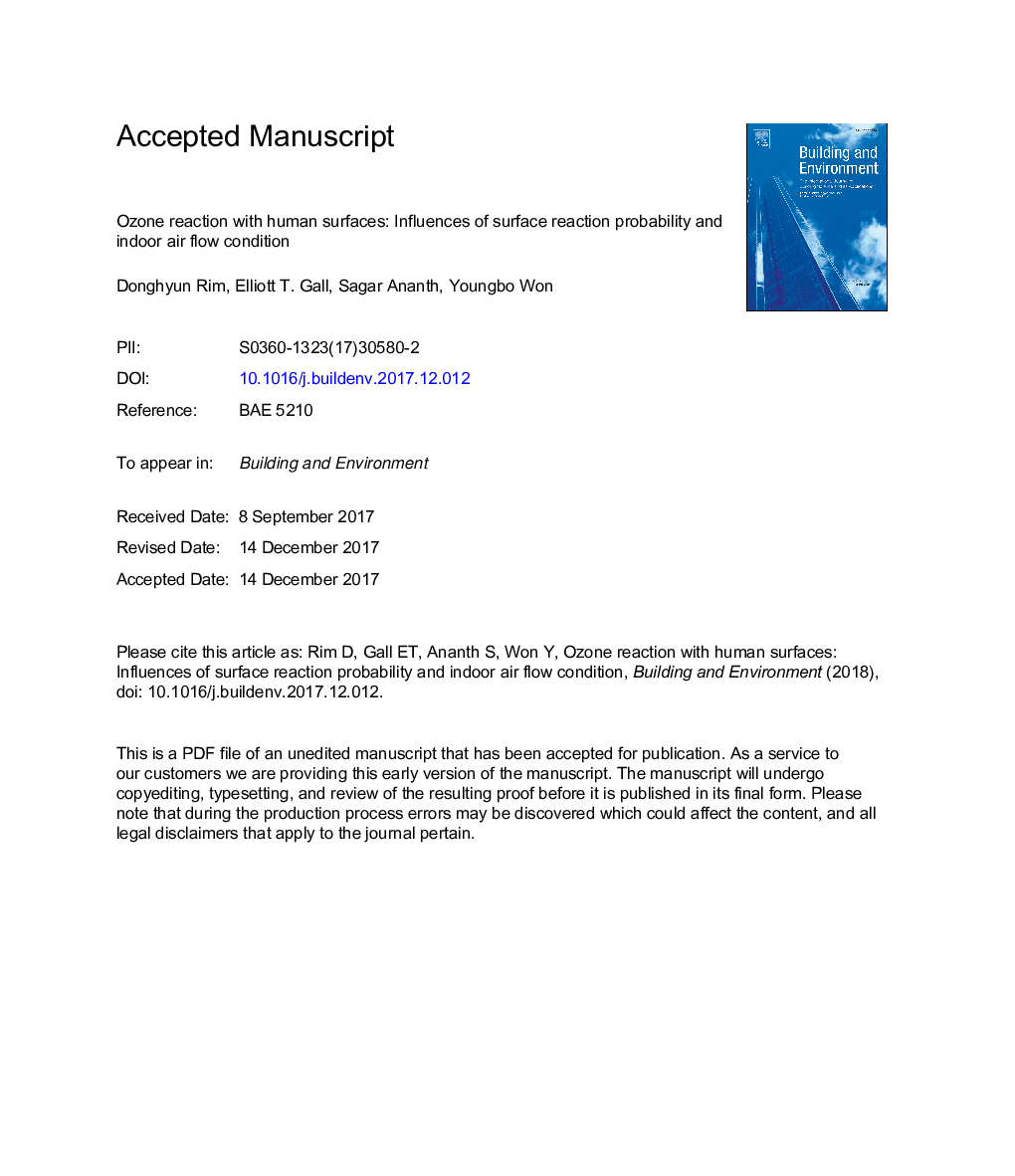| کد مقاله | کد نشریه | سال انتشار | مقاله انگلیسی | نسخه تمام متن |
|---|---|---|---|---|
| 6698123 | 1428362 | 2018 | 35 صفحه PDF | دانلود رایگان |
عنوان انگلیسی مقاله ISI
Ozone reaction with human surfaces: Influences of surface reaction probability and indoor air flow condition
ترجمه فارسی عنوان
واکنش اوزون با سطوح انسانی: تأثیر احتمال واکنش سطح و شرایط جریان هوا داخل ساختمان
دانلود مقاله + سفارش ترجمه
دانلود مقاله ISI انگلیسی
رایگان برای ایرانیان
کلمات کلیدی
سرعت رسوب، نرخ حمل و نقل محدود، شیمی درونی، روغن پوست، تن پوش، محصولات جانبی واکنش ازن،
موضوعات مرتبط
مهندسی و علوم پایه
مهندسی انرژی
انرژی های تجدید پذیر، توسعه پایدار و محیط زیست
چکیده انگلیسی
It is well-established that indoor surfaces, such as building materials, act as a sink for indoor ozone. However, comparatively little research has been done regarding ozone reactions with human surfaces such as skin and clothing. Reaction characteristics of human surfaces and airflow around the human body may affect ozone removal and reaction byproduct formation. The objective of this study is to investigate effects of the reactivity of human surfaces, modeled for a range of reaction probabilities (γ), on ozone deposition and reaction byproduct formation. Computational fluid dynamics models are verified and validated with previously published studies, and used to analyze ozone reaction dynamics due to human surfaces under varying indoor air flow conditions. The results show that for indoor environments with air exchange rate <5 hâ1, ozone deposition velocity is in the range of 8-10â¯m/h for human skin oil while it is 2-3â¯m/h for clean clothing. Surface reactivity of the human body has a larger influence on the ozone deposition velocity than do the air exchange rates or indoor airflow patterns. Modeled emission rates of major reaction byproducts from ozone chemistry with human surfaces included acetone (0.3â¯mg/h/person), decanal (0.2â¯mg/h/person), nonanal (0.1â¯mg/h/person) and 6-MHO (0.1â¯mg/h/person) for a transport-limited scenario with 90â¯ppb bulk ozone concentration. These results imply that exposures to indoor ozone and reaction byproducts can be meaningfully modulated by an interaction of building airflow and chemistry occurring on and around individuals, and should be considered in models of human exposure.
ناشر
Database: Elsevier - ScienceDirect (ساینس دایرکت)
Journal: Building and Environment - Volume 130, 15 February 2018, Pages 40-48
Journal: Building and Environment - Volume 130, 15 February 2018, Pages 40-48
نویسندگان
Donghyun Rim, Elliott T. Gall, Sagar Ananth, Youngbo Won,
